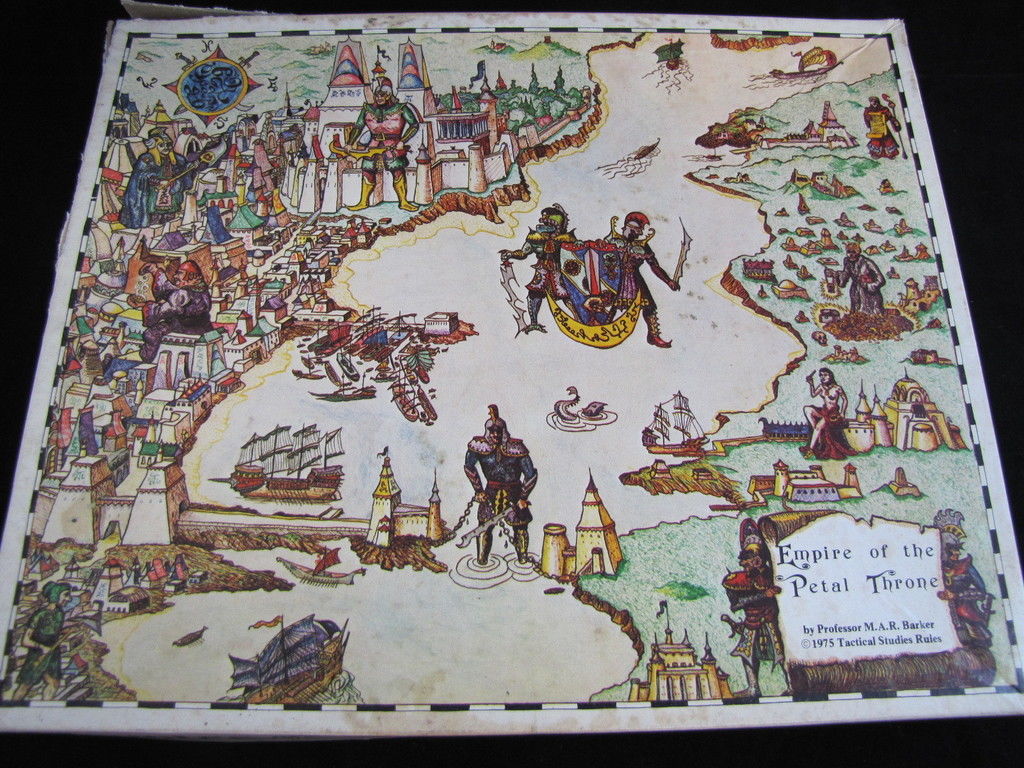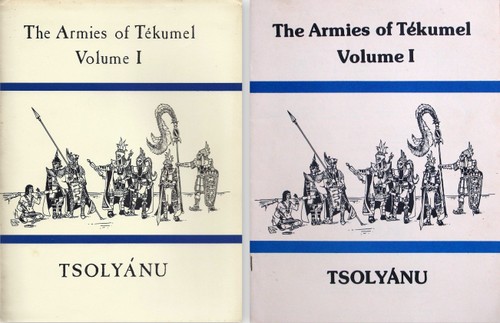

Components: Two sequentially numbered volumes with a total of 108 pages.Date: In dispute as described above (sometime in 1974).Versions: Original only – later reproduced in PDF.(One mystery is why Barker wrote “786” in Urdu above his signature.) If he quickly produced the manuscript after getting Dungeons and Dragons, then that would have been in Spring. One bit of internal evidence supports the Spring date: the Professor’s personal copy of Dungeons and Dragons is signed and dated February 19, 1974. According to members of Barker’s gaming group, Barker later recalled writing the manuscript in “Spring” of 1974, but other sources have dated the document to August. Supposedly Barker took the dare and quickly adapted the system to Tékumel after reading the Dungeons and Dragons rules.

Mornard, according to this account, told Barker that if he didn’t like the current rules of Dungeons and Dragons, then Barker could develop his own game. Mornard ran a D&D game at the association and, according to one story, Barker once complained about an implausible storyline. Mornard attended the Conflict Simulation Association, a student organization for which Barker was the faculty advisor. Barker became acquainted with the Dungeons and Dragons system via Mike Mornard, who began to attend college at the University of Minnesota in Minneapolis in Fall 1973.

There has been some debate about when this edition was produced. The hand-lettered Tsolyani on the front cover says “ Kolumébabàr hiTirikéludàlidàlisa” (“The Empire of the Great and Powerful Petal Throne.”) One of Barker’s players later recollected that even fewer copies were made: “20 at most.” This green cover edition was produced in two stapled loose-leaf volumes with a total of 108 pages. ( War of Wizards predated Empire of the Petal Throne but had just a few details of the world.) According to one source, Barker produced only 50 physical copies of this first manuscript, which is now available in PDF. Barker had begun developing his world as a child, but the first detailed Tékumel gaming item is his self-published rules manuscript, which was distributed to members of his science fiction circle and “wargaming” group in Minneapolis. Though Barker said his first rules set simplified the Tékumel universe, the detailed Empire of the Petal Throne served as the foundation for later works. I await the discovery of a Llyáni inscription. In the Borges story, in accord with idealist philosophy, the very idea of Uqbar leads to the reality and Uqbar artifacts begin to appear here and there. The detail of Tekumel gives the same frisson of seeing a veil pulled back from another reality. The existence of the 11 th volume implied the existence of the entire encyclopedia, and, surely, the existence of Uqbar and Tlön. In Borges’s story “Tlön, Uqbar, Orbis Tertius,” the narrator finds the eleventh volume of an encyclopedia describing an unknown country of Uqbar in an unknown world of Tlön. The detailed languages, the references to imagined literature, and the complex religious iconography of the world of Tekumel were not only baroque and different, but also fully thought out and largely internally consistent. I still remember the chill that ran up my spine when as a high school student I started to read the exotic and detailed Empire of the Petal Throne rulebook. TSR First Edition Empire of the Petal Throneįor me, and I suspect for many people, it was this game that launched a lifelong fascination with the world of Tékumel.


 0 kommentar(er)
0 kommentar(er)
